From the shadowy nooks and crannies of literature and cinema to the immersive world of video games, certain ominous figures have stood the test of time, haunting audiences in every conceivable way. Whether it's the aristocratic allure of Dracula, the spine-chilling presence of Sadako, the nightmarish slash of Freddy Krueger's glove, or the mind-bending puzzles set by Jigsaw, these characters have woven themselves into the very fabric of our fears. Just uttering their names can trigger a palpable sense of dread, an involuntary shiver down the spine. In this curated collection, we've sifted through the annals of horror history to bring you a definitive list of 15 iconic characters that have not only been haunting our dreams but also redefining the horror genre itself. Get ready to meet the masterminds behind your worst nightmares and the villains you hate to love, all compelling in their own uniquely terrifying ways. This isn't just a list; consider it a guidebook to the personalities that have turned the horror genre into a labyrinth of psychological twists and blood-curdling terror.
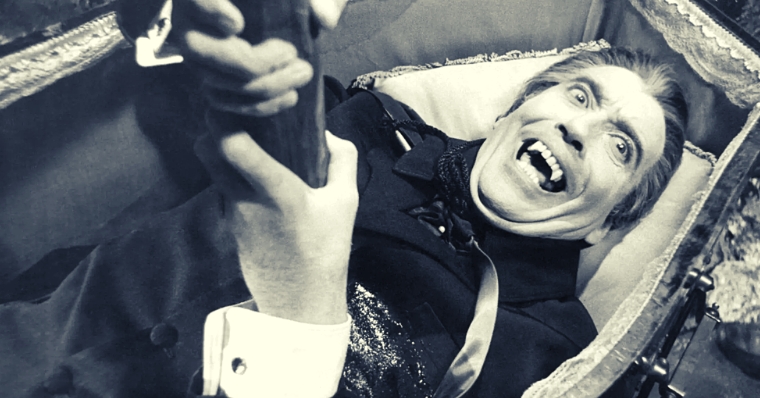
Dracula
Conjured from the depths of the Gothic imagination by Irish writer Bram Stoker, Dracula emerged onto the literary scene in 1897, instantly biting its way into cultural significance. Though the novel lacks a singular protagonist, it opens with Jonathan Harker, a solicitor who has the rather unfortunate luck of getting entangled in Count Dracula's Transylvanian web. With its decrepit castle setting and the Count's unorthodox—let's call them "fangtastic"—interests, the story sets an eerie stage that has since become iconic. Over the decades, Dracula has shape-shifted through various portrayals, each as enduring as the Count's immortality. Screen legends spanning generations have donned the fangs and cape, breathing new life—or should we say, undeath—into the character. From Bela Lugosi's era-defining role to Gary Oldman's nuanced rendition, and even some unlikely candidates like Nicolas Cage and Adam Sandler, this character's resilience in the face of time is nothing short of astonishing. The roster of actors who've assumed this role is a testament to Dracula's pervasive influence across genres and generations. It's not just about the horror of bloodsucking; Dracula has also come to symbolize a whole host of deeper fears and fascinations, from the allure of the forbidden to the complexities of mortality. So, whether you view him as a monster or a metaphor, Dracula remains as hauntingly captivating as that first moonlit night in Transylvania.

Frankenstein
Born from the brilliant mind of Mary Shelley, "Frankenstein, or The Modern Prometheus" is a symbolic piece of Gothic literature that set a precedent not just for horror but also for the science fiction genre. Trust me, when discussing the titans of terror, you can't sidestep this lumbering behemoth stitched together from human parts. Mary Shelley didn't just write a story; she birthed a legend. Debuting in 1818, the novel unfurls the morally complex tapestry of Dr. Victor Frankenstein and the creature he assembles from stolen body parts. Don't let the antiquated origins fool you; this story has aged like a fine wine—or perhaps, like a well-preserved specimen in a mad scientist's lab. Because let's be honest: the book isn't just about a science experiment gone awry; it dives headlong into the murky ethical waters of playing God, questioning the nature of humanity and forcing us to confront our innermost fears. Through the years, the tale has been reimagined, referenced, and adapted into every conceivable form of media. From stage plays and films to video games and graphic novels, Frankenstein's Monster has continually shape-shifted to fit the anxieties and fascinations of each new generation. So pervasive is its reach that the visage of the creature—bolted neck, flat-top head, and all—has become an inescapable symbol in the pop culture pantheon of horror. At the end of the day, whether you're dissecting the book in a high school English class or encountering one of its numerous adaptations, "Frankenstein" stands as a monolithic testament to human ingenuity, ethical enigmas, and the enduring power of storytelling. So, if you think you're beyond being spooked or intrigued, crack open those ancient pages or press play on a modern retelling. You'll find that, much like its creature, the story of "Frankenstein" is alive—oh, so very alive.
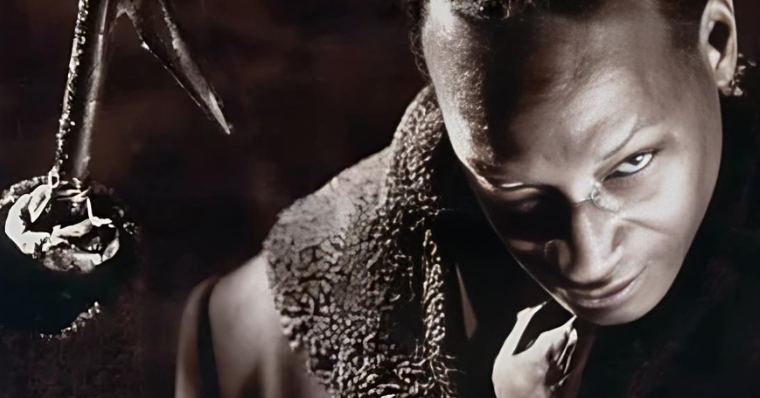
Candyman
So, here's the scoop: Candyman doesn't necessarily stand alone when it comes to unforgettable figures in the horror scene. No, the true star that catapulted this character into the horror Hall of Fame is Tony Todd. Todd has that charismatic aura that's crucial in the horror world, and among his numerous iconic roles, Candyman certainly has a special place. Dreamed up by the imaginative Clive Barker in 1986, Candyman is no mere horror villain; he's an urban legend come to life. This isn't just some run-of-the-mill monster; he's the unsettling result of an anthropologist's research that went terribly wrong (or terribly right, depending on how you look at it). Let's get into the nitty-gritty. Our man—or should I say phantom?—Candyman has a hook for a hand. Yep, you heard me. A hook replaces his severed hand, and it's not just for show; it's his signature tool for terror. But here's the kicker: To summon this menacing figure, you must say his name five times while staring into a mirror. Trust me, it's not a party trick you want to pull. And although he might not have a sprawling film saga like some other horror bigwigs, Candyman's cinematic history is nothing to shrug off. With four films under his belt, each one adding a unique twist to the lore, he's managed to carve out a compact yet compelling franchise. So it may not be the longest-running series out there, but what it lacks in length, it more than makes up for in-depth and sheer terror-inducing moments. At the end of the day, Candyman is a fascinating case study of how an actor like Tony Todd can elevate a character from the written page to an eerie on-screen presence. Coupled with the intriguing concept by Clive Barker, it creates a cinematic experience that's hard to shake off. So next time you're in front of a mirror, maybe think twice before you start chanting names because, in the world of horror, even reflections can come back to haunt you.
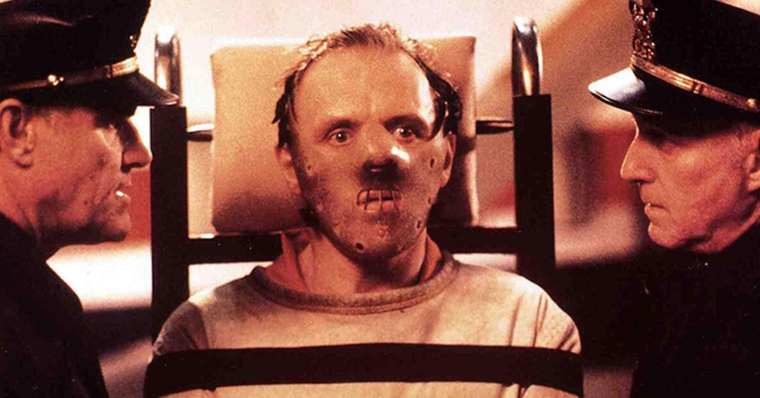
Hannibal
Let's dive into a world where the lines between intellect and instinct blur intriguingly—welcome to the universe of Hannibal Lecter. Now, this isn't your garden-variety horror fare; it's a complex blend of psychiatry and—wait for it—cannibalism. Yeah, you heard that right. This duality of refined intellect and primal urges isn't just a random mix; it's a calculated, mesmerizing spectacle. And believe it or not, the vivid imagery goes from shockingly grotesque to eerily beautiful. This kind of juxtaposition has been a hallmark from the character's early days, epitomized by Anthony Hopkins in the films and carried on spectacularly by Mads Mikkelsen in the TV series. Conceived by Thomas Harris, Hannibal Lecter first emerged from the shadows in the 1981 novel "Red Dragon." But he didn't just stop at making a splashy entrance; oh no, he became the epicenter of an ever-expanding universe. And it's not just a single narrative line we're talking about; the character has spawned an astonishing five films, a critically acclaimed TV series, and—get this—even a spin-off zeroing in on Clarice Starling, his intellectual sparring partner and, dare I say, his "nemesis." While Hannibal's academic credentials as a psychiatrist might lull you into a sense of security, don't let that façade fool you. The guy is a top-tier, full-blown cannibal. It's this tension between the doctor and the killer within him that fuels the ongoing fascination. The storyline revolves around this compelling dichotomy, and the narrative takes you on an emotionally complex rollercoaster. It's like a psychological chess match with much higher stakes and the occasional culinary twist you probably wouldn't want to sample. Let's talk about the supporting cast, especially Clarice, to add another layer to this intricate cake. She's not just a token antagonist; she's a multidimensional character with her own story arc and complexities. Their intellectual tête-à-têtes are as riveting as any action scene, elevating the psychological warfare to an art form. So there you have it. Hannibal's world is a labyrinthine weave of intellect and horror, where each twist and turn keeps you guessing, and each new installment feels like an adrenaline rush for the mind and the senses. Remember, if you ever get an invitation to dine with Dr. Lecter, you might want to decline politely. Trust me; you don't want to be on the menu.

Regan MacNeil
Let's unravel the enigma that is Regan MacNeil, shall we? Portrayed unforgettably by Linda Blair, Regan shot to infamy in the 1973 film "The Exorcist," adapted from William Peter Blatty's chilling 1971 novel. But here's where it gets even more hair-raising: the story is rooted in real-life events. Yeah, this isn't pure fiction we're talking about. When it comes to Regan, it's not just the spinning head and the pea soup-projectile vomiting that get under your skin—though those are pretty scarring. What truly makes her the poster child for exorcism lore is how she profanes everything sacred. From her disheveled appearance to her blasphemous outbursts, Regan turns the idea of innocence on its head, effectively making every reverential thing feel suddenly precarious. Now, you've got to give due credit to Linda Blair's spine-chilling portrayal and William Friedkin's masterful direction. These two combined forces in a way that made "The Exorcist" a landmark not just in the realm of horror but specifically in the subgenre of possession tales. The film's success didn't just put them on the map; it basically drew the map. Linda Blair's acting and Friedkin's directorial skills became the gold standard for the genre. They took possession of horror from the shadows and thrust it into the glaring spotlight, making it impossible to talk about demonic possession without referencing this cornerstone. The ripple effect of Regan MacNeil goes beyond the film and the book. The character has found her way into various forms of media over the years, popping up in everything from comic strips to Internet memes. She's basically the yardstick by which other possession stories are measured. But don't mistake this for mere repetition; each reference, homage, or parody adds a layer to our understanding—or maybe misunderstanding—of what possession can mean in different contexts. If you're a horror genre fan, you probably agree that Regan MacNeil is not just another forgettable character. She's an emblem of the insidiousness lurking where you least expect it—sometimes even within the innocent. She has etched herself into the collective subconscious so deeply that her legacy extends far beyond the frames of a film reel or book pages. Quite simply, when discussing exorcism in pop culture, Regan MacNeil is the name that will come up. And when it does, you'll likely feel a slight chill run down your spine, right? And for good reason.
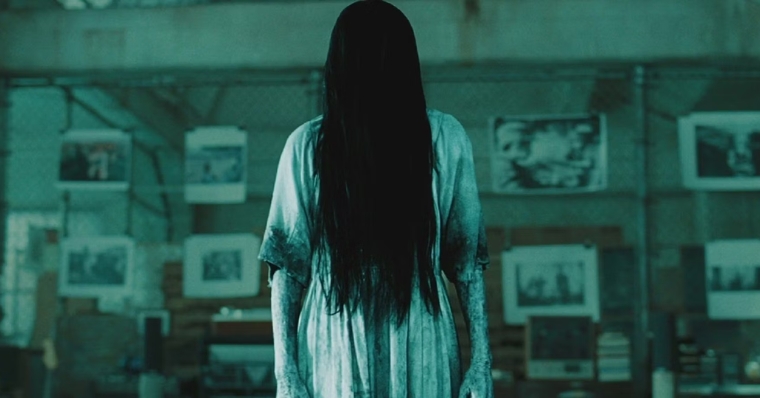
Sadako Yamamura
So, you might not instantly recognize the name Sadako Yamamura if you're not well-versed in Japanese horror, but make no mistake, this eerie figure is a big deal in her home country. Think of her as Japan's very own Queen of Spooks, reigning supreme with a jaw-dropping nine movies and various manga adaptations and books. But her frightful allure doesn't stop there. This queen has gone international—reimagined in Korean cinemas as Park Eun-suh and in the U.S. as the chilling Samara Morgan. The brainchild of writer Koji Suzuki, Sadako first emerged from the depths of our nightmares in 1991. But it wasn't until her cinematic debut in 1998 that she donned her iconic look—a matted tangle of hair obscuring her face, giving off all sorts of creepy girl-from-the-well vibes. Oh, speaking of wells, let's talk about that too. Her backstory involves a morbid well setting that would make anyone think twice about drawing water ever again. To up the ante on her eerie reputation, she's inexplicably linked to VHS tapes. Yes, you heard me, VHS tapes! In the '90s, that was cutting-edge horror tech, my friends. The legend goes like this: watch her cursed videotape, and within seven days, your phone will ring, and the spectral Sadako herself will make a house call that you'd rather skip if you get my drift. In a world oversaturated with jump scares and gore, Sadako brings that slow-burning, relentless dread that chills you to your core. Let's talk about her metamorphosis for a moment. It's fascinating how she evolved with each adaptation, crossing borders and languages and adapting to different cultures while keeping her sinister core intact. Whether she's Park Eun-suh in Korea or Samara Morgan in the States, her modus operandi remains the same: terror via videotape. In each variation, filmmakers and writers found a way to imprint their creative license on Sadako, making her a versatile yet enduring figure in the horror genre. The tale of Sadako serves as a prime example of a modern-day urban legend fused with tech phobia and old-world mysticism. It taps into that universal fear of the unknown lurking in our everyday lives—sometimes even in objects as mundane as a videotape. If you've ever hesitated before hitting the play button on an unfamiliar video, maybe, just maybe, the ghostly figure of Sadako and her ever-expanding lore is haunting your subconscious. So, while she might not have the immediate name recognition worldwide that some horror icons do, in the spheres where she's known, Sadako is a bona fide legend. One who has effortlessly transitioned from one medium to another, from one culture to another, all while keeping us terrified. It's not just a scare but a genuinely complex character that keeps us pondering what really makes our skin crawl. Now that's staying power in horror if you ask me.
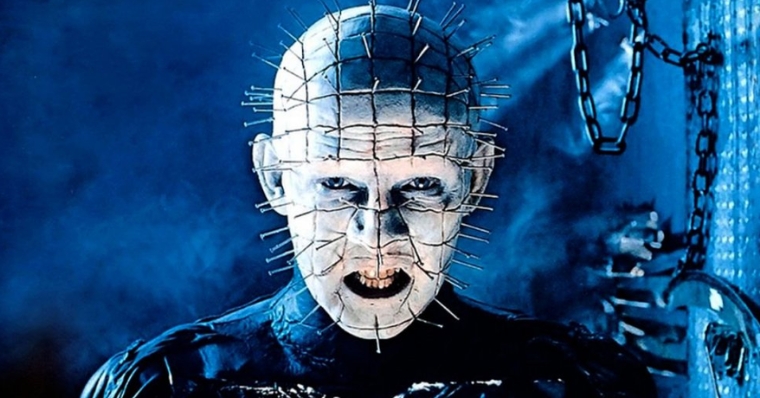
Pinhead
Even if you're not a die-hard horror fan, chances are you've crossed paths with this macabre visage at least once in your life. I mean, how could you forget a face adorned with nails? This haunting figure, officially known as the Lead Cenobite or Hell's Priest, emerges from the dark corridors of your worst nightmares, his skull adorned with an array of sharply pointed pins. Dreamed up by the endlessly inventive Clive Barker back in 1986, Pinhead initially graced the pages of the novella "The Hellbound Heart." But here's the twist: this nightmarish entity didn't make a splash until Barker decided to adapt the story for the silver screen. Only then, in 1987, with the release of "Hellraiser," Pinhead became a household name—or at least, a name whispered in hushed tones by those who dared to delve into the darker corners of cinema. The film adaptation supercharged Pinhead's eerie appeal, making him not just a random demon but an articulate, almost philosophical entity fixated on the complex relationship between pleasure and pain. Clive Barker masterfully transformed what could have been a simple scare tactic into a deeply unsettling exploration of human desires, fears, and cosmic horror. The '80s were a golden era for horror, swarming with slashers, zombies, and supernatural creatures of all sorts. Amidst this cavalcade of monsters, Pinhead stood out like a beacon—or perhaps more fittingly, like a sharp nail jutting out of a wooden board. He didn't just stalk his prey mindlessly; he engaged with them in twisted dialogues, weaving an intricate tapestry of terror that also made you ponder the depths of the human psyche. His modus operandi is distinctly unique, too. Rather than haunting dreams or lurking in the woods, Pinhead resides in an otherworldly labyrinth, ushering in the brave (or perhaps foolish) souls who dare to solve the Lament Configuration. This cryptic puzzle box serves as a gateway to his hellish domain. Once you're in, oh boy, you're in for an experience that oscillates between torture and transcendence in ways you can't even begin to fathom. It's captivating how Barker's creation has pierced not just the skin but also the cultural zeitgeist. Over the years, Pinhead has spawned a multi-film franchise, comics, merchandise, and even academic discussions around his philosophy of pleasure and pain. It's almost like he's transcended the bounds of traditional horror archetypes to become this complex, enigmatic figure who makes us question the very fabric of reality and our darkest inner cravings. That's the magic of Pinhead. Unlike many other horror icons who are content to scare, he unsettles us on a deeper, more cerebral level. He makes us question, reflect, and, yes, shudder at the possibilities of what might be lurking not just in the dark but within the complexities of our own souls. No simple boogeyman, Pinhead is both a philosophical nightmare and a cultural phenomenon—a duality that ensures he'll intrigue and terrify audiences for years to come.
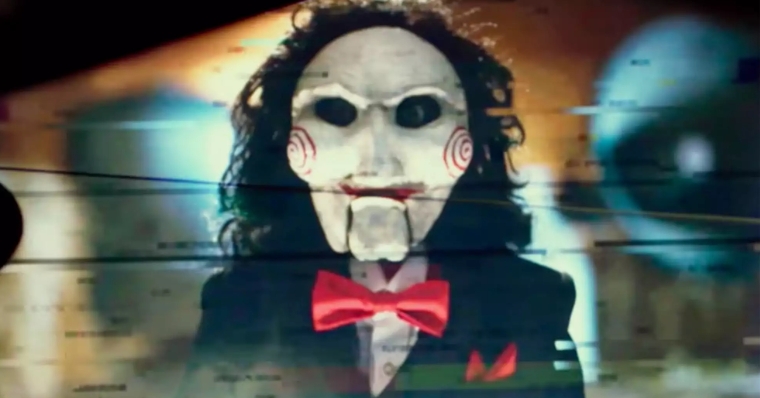
Jigsaw
Meet Jigsaw, the infamous puppet from the bone-chilling "Saw" franchise. Trust me, this isn't the kind of doll you'd want to find under your Christmas tree. Crafted by the cinematic minds of James Wan and Leigh Whannell, this little guy serves as the face of one of the most unsettling serial killers in movie history: John Kramer, portrayed with unnerving precision by Tobin Bell. But what sets Jigsaw—both the puppet and the man—apart from your garden-variety psycho is something incredibly unique. He doesn't just slaughter his victims willy-nilly; that would be too easy. Instead, Jigsaw turns the act of killing into a sort of twisted game that allows his victims to make grim, terrible choices, mind you—between life and death. Talk about putting the 'psycho' in 'psychological thriller,' right? Jigsaw's method is, in a word, diabolical. While other cinematic killers might just chase you with a knife or jump out of the closet, Jigsaw locks you in an elaborately constructed chamber, offering you a devilish dilemma: perform some horrific act of self-mutilation or face an even worse fate. All the while, his distorted voice emanates from a tape recording or, even worse, that eerie puppet, taunting you as you teeter on the brink of despair. The gruesome scenarios he designs—like sawing off a limb or gouging out an eye—aren't just about physical torment; they're designed to inflict psychological agony. Jigsaw aims to get inside your head, making you question the moral fabric of your own existence. Could you harm another to save yourself? Could you inflict pain upon your own body to evade the clutches of death? It's a dark maze of ethical quandaries, leaving you to navigate the labyrinthine corridors of your own morality. And here's the kicker: Jigsaw—John Kramer, the man behind the mask—considers himself something of a philosopher. In his twisted perspective, these sadistic puzzles serve as life lessons and opportunities for his victims to demonstrate their will to live. He thinks he's doing society a favor, weeding out those who don't appreciate life by putting them through these trials. It's a worldview as complicated as the intricate death traps he constructs. Jigsaw's character digs deep into the human psyche, unearthing fears and dilemmas that are both intimate and universal. He compels us to confront our darkest selves and ponder questions we'd rather not consider. So, while the gory deaths might initially catch your eye, it's the complex web of choices and consequences that truly define Jigsaw as a character, keeping us hooked and on the edge of our seats. This ingenuity in storytelling makes Jigsaw a standout even in a genre often dismissed for its lack of depth. He isn't just a killer; he's an enigma, a paradox, a walking, talking, puzzle-making paradox. His labyrinthine logic and mind-bending games have made him a cultural icon that fascinates, terrifies, and confounds us all simultaneously. And so, Jigsaw remains firmly etched in our collective nightmares—a puppet master in the most horrifying sense, whose strings of moral dilemmas are as tangled as they are terrifying. This multifaceted complexity makes him one of the most enduring and haunting characters the world of horror has ever seen.
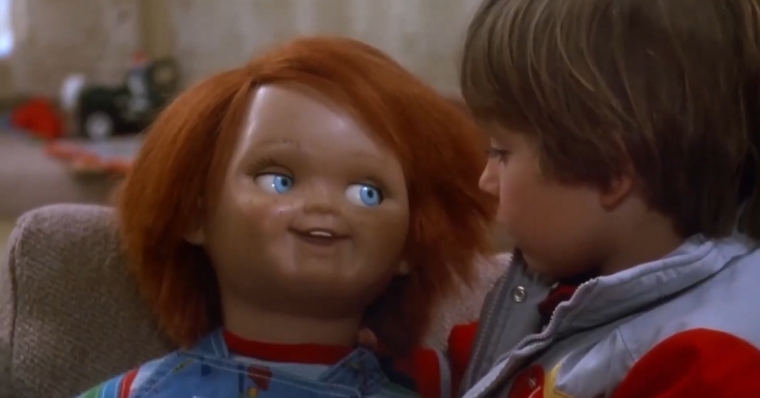
Chucky
Chucky—the name alone can send shivers down the spines of anyone who grew up in the '80s and '90s. Officially known as Charles Lee Ray, this notorious character is no ordinary toy. Imagine this: a Good Guy doll, seemingly innocent and cheerful, actually possessed by the soul of a Lakeshore Strangler. A juxtaposition of childhood innocence and nightmarish terror, Chucky has masterfully blurred the lines between playtime and killing spree. Chucky was born from the creative cauldron of Don Mancini in 1988, and he quickly achieved what many fictional villains only dream of a cult following. It's not just that he's a "killer toy," but he brought a sense of personality and a sarcastic wit that made him terrifying yet irresistibly captivating. When Chucky speaks, it's not in the cutesy voice you'd expect from a children's doll. Oh no, it's the gritty, menacing tone of Charles Lee Ray, making you doubt every plush toy you've ever hugged. Over the years, this enigmatic figure has been immortalized in not one or two but a whopping seven films, each revealing new facets of his twisted psyche. If that's not enough to satisfy your morbid curiosity, he's also been the centerpiece of a dedicated TV series. That's right, this diminutive terror made the jump from the big screen to the small screen, maintaining his reign of terror in living rooms across the globe. And in each iteration, the tales grew darker, the stakes higher, and the body count, well, let's just say it's not for the faint of heart. In a surprising twist, a 2019 reboot graced our screens—but with one glaring omission. Charles Lee Ray was conspicuously absent, leaving some fans nostalgic for the original Chucky's acidic humor and evil spirit. Yet, even in his absence, the film served as a testament to the character's enduring appeal. How many villains can say they've been reimagined for a new generation and still leave fans clamoring for the original? Not many, I'd wager. So, why has Chucky been so enduring? Perhaps that unsettling blend of childish antics and adult malevolence makes him perpetually intriguing. He's the embodiment of corrupted innocence—a cheerful plaything turned sadistic murderer, challenging our perceptions of what's safe and dangerous and how sometimes the two can be indistinguishable. Let's be clear: Chucky isn't just a product of cinematic imagination. He's a psychological puzzle, a cocktail of our primal fears and fascinations. From his very first maniacal laugh to his latest blood-curdling exploit, Chucky has not just entertained us; he's invaded our collective psyche, questioning the boundaries between child's play and deadly seriousness. So the next time you glance at a toy on a store shelf, you might wonder: What if? It's a legacy only a character as compelling as Chucky could leave behind. And that, my friends, is the sign of a truly unforgettable villain.
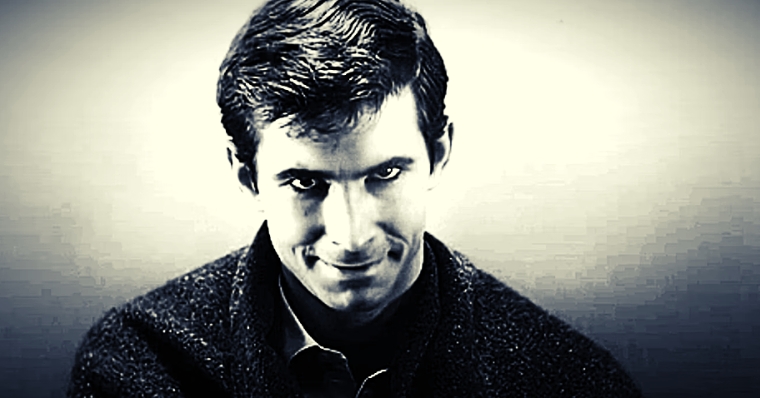
Norman Bates
Norman Bates is more than just a name; it's a persona that has seeped into our collective subconscious, unsettling us to the core. Created by author Robert Bloch, Norman first graced the screen in Alfred Hitchcock's 1960 film, "Psycho." Let's not forget Anthony Perkins, who took on the role and turned it into an unforgettable foray into the human psyche. Hitchcock's iconic plot twist floored audiences and instantly made this character one for the history books. This audacious storytelling maneuver was so impactful that Universal Studios couldn't resist doubling down on Norman Bates, ensuring he'd stick around in our cultural memory for much longer. But Norman's story didn't end with "Psycho." Oh no, the tale was too tempting, the character too complex. Universal Studios explored his tortured soul in not one, not two, but three additional films. It's like they knew we couldn't get enough of peeling back the layers of this intricate personality. Each movie provided fresh angles, new insights, and more moments that made you second-guess trusting that charming guy next door. Hold onto your seats because there's more. Norman Bates jumped from the silver screen to the smaller one with his origin story series, "Bates Motel." This time, the role was reprised by Freddie Highmore, who gave a gripping performance that had us all questioning where Norman ends and Highmore begins. The series delves into the infamous innkeeper's untold backstory, intricacies, and dark complexities. It's the kind of show where every episode leaves you wondering what secrets still lurk in the depths of his twisted mind. To keep the legend alive and kicking, let's not overlook the 1987 TV movie and the 1998 remake of "Psycho." Each of these productions took a stab—no pun intended—at reimagining or expanding upon the original story. While they stirred up their own cocktail of dread and suspense, they also contributed to the ever-growing legacy of Norman Bates, one that traverses different formats and interpretations, each time pushing the boundaries of our comfort zone. You see, Norman Bates isn't just a character; he's a phenomenon. Whether played by Perkins in the initial film series or by Highmore in the 2013 TV show, he embodies an ever-changing tableau of human vulnerability and hidden darkness. It's a role so rich in nuance that it keeps actors and audiences alike on their toes, trying to pinpoint the exact moment when Norman slips from misunderstood to downright nasty. Norman Bates is a multifaceted, chameleonic character whose ambiguity keeps us questioning, pondering, and utterly fascinated. And that's the beauty of it. Just when you think you've got him figured out, another layer unfolds, making you realize he's far more complex than you initially suspected. His evolution across multiple platforms shows that he's not confined to any single narrative; he's an icon that continually evades categorization. Norman Bates isn't merely a fictional character; he's a study in complexities, a challenge for storytellers, and a haunting presence for audiences. Whether you're watching him for the first time or the tenth, each new iteration adds another unsettling shade to this deeply colored tapestry, proving that some legends simply refuse to be confined to the past.
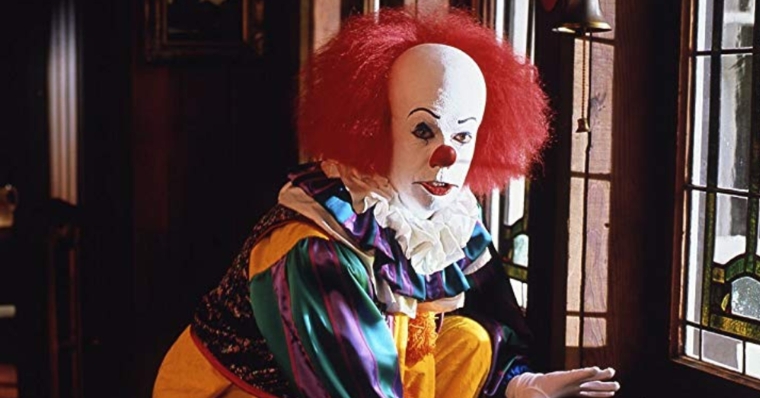
Pennywise
Pennywise isn't your average monster lurking in the dark. This creature, straight out of the vivid imagination of none other than Stephen King, has haunted readers and audiences alike as a shape-shifting supernatural entity. While it's true Pennywise can morph into just about anything, the iteration that's captured our collective dread is decidedly clownish. So why the clown, you might ask? Clowns are both familiar and deeply unsettling—a concoction that makes them the perfect vessel for horror. It's no wonder this guise has dominated King's novel, "It," and its subsequent film adaptations. The locale is the fictitious town of Derry, where Pennywise doesn't just lurk in the sewers; it's an evil force that feeds off the deepest, darkest fears of the town's children. This isn't just about physical horror but psychological terror, tapping into the fear centers of young minds. It's as if this creature read Sigmund Freud and said, "Yeah, I can weaponize that." You'd be hard-pressed to talk about Pennywise without mentioning Tim Curry's larger-than-life performance in the 1990 miniseries "It," suitably subtitled "A Masterpiece of Horror." Curry's portrayal was an electric jolt to the horror genre, an interpretation so quintessential that it would set the tone for future renditions. His Pennywise was grotesque and oddly charming—a combination that left us questioning our understanding of fear. But wait, the Pennywise train didn't stop there. In 2017, a young actor named Bill Skarsgård stepped into the oversized clown shoes, bringing a fresh layer of nuance to the iconic role in "It." Skarsgård's performance offered a modern touch, reinvigorating the character for a new generation while still paying homage to Curry's original rendition. His eyes, disconcerting and predatory, promised nightmares long after the credits rolled. Though distinct, the two portrayals of Pennywise share a kind of eerie symmetry. They are two sides of the same tarnished coin, offering viewers different but equally harrowing gateways into the same labyrinthine psychology of fear. It's a nuanced, evolving conversation between two artists separated by almost three decades, a testament to King's creation's enduring power and adaptability. Pennywise exists in the margins of our consciousness, in that strange space between nightmare and reality. It's a character that transcends a single narrative, becoming an ever-evolving emblem of our collective fears. Both Curry and Skarsgård had the daunting task of distilling this complex entity into something tangible and did so with an artistry that makes you forget you're watching fiction. There's something captivating about how Pennywise adapts, not just within the story but across different mediums and times. It's as if the character is continually shape-shifting, adopting new forms to elicit fear in each generation. The clown is just the façade, an invitation into a far more intricate web of terror. It's like a hall of mirrors; each reflection shows another facet of our shared anxieties, darkest fears, and most unsettling dreams. The brilliance of Pennywise lies not just in its form but in its ability to adapt, change, and keep us on the edge, wondering what form our nightmares will take next.
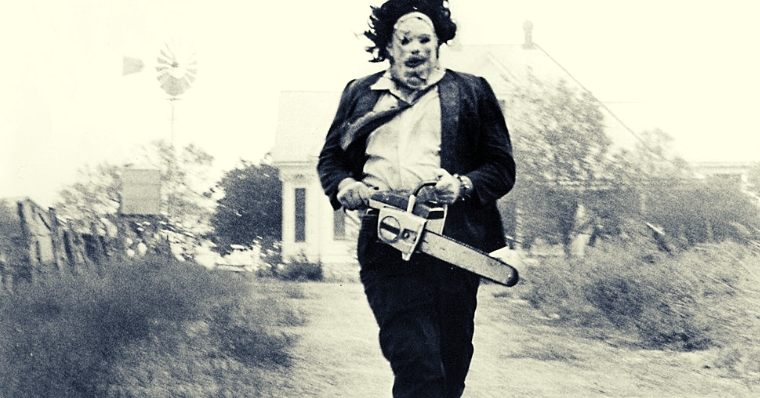
Leatherface
If you've ever taken a deep dive into the world of slasher flicks, there's a good chance you've encountered Leatherface—the human-skin-mask-wearing, chainsaw-wielding psycho. You'd know him if you saw him; he's that terrifying hulk of a man who turned the simple act of woodworking into an exercise in sheer terror. Making his grand entrance in 1974's "The Texas Chainsaw Massacre," Leatherface became a gruesome but unforgettable symbol of the burgeoning slasher genre. Crafted by the ingenious duo of Kim Henkel and Tobe Hooper, Leatherface wasn't merely some masked villain; he was an embodiment of pure, unadulterated dread. Forget about some masked dude in the suburbs. We're talking about a deranged cannibal living in the Texan backwoods, a member of a sadistic, cannibalistic family who made their murderous mark on cinema history. And the thing that sets him apart? His choice of weapon—a chainsaw. There are no daggers or guns for this guy; his approach to horror is loud, messy, and in your face, and you've got to admit, that's a pretty compelling twist on the norm. But Leatherface isn't a one-trick pony. Nope, he's been the focal point of not one, not two, but at least eight films. Each one peels back yet another layer of his complex, bone-chilling persona. It's like a grim advent calendar, where each door you open reveals another nightmare. And if that weren't enough, he's also been immortalized in comics and even video games. Believe it or not, he's crossed over into iconic gaming franchises like "Mortal Kombat" and "Dead by Daylight." When you reach that level of fame, you're not just a horror icon—you're a pop culture phenomenon. Now, I know what you're thinking. The world of fictional killers is, let's face it, pretty saturated. But Leatherface still stands out, doesn't he? Maybe it's the visceral nature of his crimes. Perhaps it's the unsettling notion that he's wearing his victims' faces as if they were mere Halloween masks. Or could it be that we're a bit fascinated by the unspeakable? Our societal norms and mores are being turned upside-down, making us question just how thin the line is between civilization and barbarism. Whatever the reason, Leatherface continues to captivate and terrify audiences even decades after his cinematic debut. Leatherface isn't just a man or a myth; he's a complex character study of what deeply frightens us. He's not just a villain; he's a narrative, a storyline, a harrowing exploration into the darkest corners of the human psyche. And in the process, he challenges us to confront our own vulnerabilities, our own morbid curiosities, and, yes, our own fears. You might say he's the embodiment of all the things we don't want to think about but can't help but ponder. So, if you find yourself pulling the covers a bit tighter during a late-night horror movie binge, don't say I didn't warn you. Leatherface has that kind of impact, and it looks like he's here to stay.

Michael Myers
In a world chock-full of bad guys with elaborate costumes and backstories, Michael Mayers still manages to stand head and shoulders above the rest—and not just because of his impressive stature. We first met him back in 1978 when John Carpenter unleashed "Halloween" upon an unsuspecting public, and our understanding of horror was never the same. Michael Myers, often referred to as "The Shape" in the credits, is more than just another faceless villain; he's an enigma, an unfathomable shadow lurking in the dark corners of our imagination. And if you're wondering why he's called "The Shape," it's because he isn't quite human. He's more like a manifestation of evil—a soulless void hidden behind that iconic William Shatner mask. Yep, you heard me right: the mask is a modified version of a William Shatner mask. Talk about creepy and fascinating all rolled into one! But let's rewind to understand this man—or should I say, this entity—a bit better. The haunting tale of Michael Myers kicks off with the cold-blooded murder of his older sister on, you guessed it, Halloween night. The catch? He was just six years old when he committed this horrendous act. Picture a small, seemingly innocent child turning into a killer so inexplicably, and you'll understand why this guy remains an enigmatic terror in the horror genre. Fast forward fifteen years, and we find Michael locked up in a psychiatric hospital, where even the most brilliant minds couldn't begin to unravel the labyrinth that is his psyche. But, of course, what kind of horror story would it be if the villain stayed put? On another Halloween night—because, apparently, Halloween is his own personal purge—Michael breaks out to wreak havoc on the sleepy town of Haddonfield, Illinois. He's not just out for a stroll; he's on a mission to spread the kind of fear that seeps into your bones and lives there forever. Now, let's delve a little deeper. Why has Michael Myers continued to capture the imagination and fuel the nightmares of audiences for over four decades? Maybe it's because he's not just a masked killer but an embodiment of relentless evil. Or perhaps his mysterious and almost supernatural quality defies explanation, which heightens the terror. He doesn't speak; he doesn't have discernible motives, and that is what makes him so chillingly effective. He's the epitome of the unknown, and the unknown is terrifying. The brilliance of Michael Myers as a character lies not just in what is shown but also in what is left to our imagination. We never really get to know him. Even after numerous sequels and reboots, he remains largely a mystery, an unsolvable riddle wrapped in an enigma and tucked behind a pale, emotionless mask. He's both nowhere and everywhere, lurking in the shadows of our minds long after the credits roll. You know what they say: the most horrifying monsters are those we can't understand, and Michael Myers is proof of that. So next time you find yourself walking home alone on a chilly Halloween night and you hear footsteps behind you, remember: Michael Myers is the reason we all look over our shoulders. And let's be real—this shadowy figure of terror isn't going away anytime soon.

Jason Voorhees
Okay, let's get one thing straight: When discussing horror movie icons, it's practically a sin, not to mention Jason Voorhees. Yeah, you know who I'm talking about—Mr. Hockey Mask and Machete himself. Whether you're an avid horror fan or just someone who dabbles in the genre from time to time, you've probably stumbled upon the franchise "Friday the 13th" at some point. And you know that the mere mention of Jason Voorhees is enough to send shivers down your spine. But hold on, let's roll it back a bit. Jason wasn't always the terrifying behemoth we've come to associate with lakeside massacres and brutally creative ways to snuff out teenage camp counselors. He actually started as a victim in the original 1980 movie. Yep, in the beginning, the spotlight was on Pamela Voorhees, Jason's mom, who was the real mastermind behind the first bout of mayhem . She was on a vengeful rampage because she blamed the counselors for her son's supposed drowning years earlier. Now, just when you think the first movie was over, they pulled a fast one on us. Right at the tail end, we're greeted with the reanimated spirit of Jason emerging from the water—setting the stage for the unholy, never-ending rollercoaster of horror that the franchise would soon become. The kid wasn't just back; he was back with a vengeance. From there, Jason evolved into a full-fledged, albeit silent, killing machine. And what started as a single movie has since exploded into a sprawling media empire. We're talking a whopping twelve films, a TV series, novels, comic books, and even video games. Jason's pop-culture imprint is so pervasive that it feels like he's almost a part of our shared folklore. Why has Jason Voorhees stood the test of time? Perhaps it's the eerie simplicity of his character: no grand speeches, no intricate motives—just an unstoppable force driven by an insatiable urge to kill. Or maybe it's the sheer inventiveness with which he dispatches his victims. Let's be honest; the guy is practically an artist when it comes to this stuff. Chainsaw? Check. Spear gun? Done. Telekinesis? You better believe it. He's got a whole toolbox of terror up his sleeve and is not afraid to use it. But there's also something intrinsically captivating about his signature look. That hockey mask is as iconic as it is unnerving. It masks all emotion, rendering him an unfeeling avatar of doom. It makes you wonder, is he a tortured soul compelled to kill because of his troubled past? Or is he merely a vessel for an incomprehensible evil? Whatever it is, he doesn't need to say a word; that mask says it all. In essence, Jason Voorhees is a mind-bogglingly simple and endlessly complex paradox. He doesn't just exist in the world of "Friday the 13th"; he looms over the landscape of horror as a monumental figure of dread and violence. And so, whenever the calendar hits that fateful date, a little voice inside our heads reminds us to stay away from secluded lakes and to double-check those locks because Jason Voorhees has long since transcended the boundaries of fiction. He's not just a character in a film series; he's an enduring myth, a cautionary tale, and a dark reflection of our deepest fears. So, the next time you find yourself near the waters of Crystal Lake, tread carefully. You never know what might be lurking just below the surface.
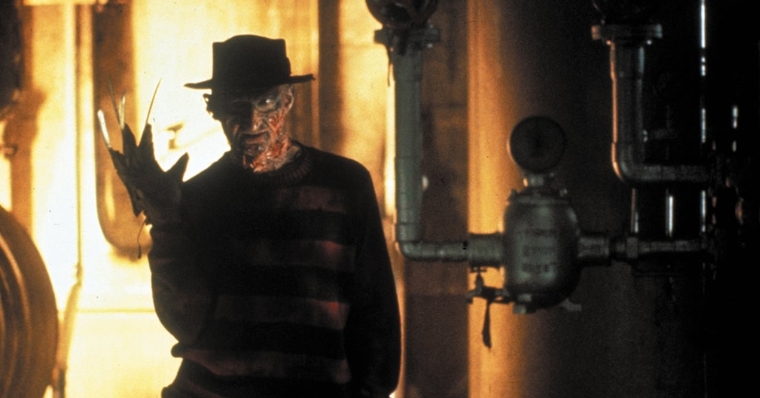
Freddy Krueger
Freddy Krueger, that sweater-wearing, hat-tipping, finger-knife-wielding horror icon, is practically synonymous with sleepless nights. This sinister legend was first conjured up by Wes Craven back in 1984 in the film "A Nightmare on Elm Street," and oh boy, did he create a storm. Originally, Freddy was depicted as a child murderer who was hunted down and burned alive by an angry mob of parents seeking retribution. It was a bad move because Freddy didn't stay down for long. Far from it. He reemerged, this time not as a mere man but as a vengeful spirit with a new killing turf: people's dreams. The dark irony here? The parents who initially killed him to protect their children effectively unleashed an even greater horror upon them. But get this: Freddy's origin story has seen its fair share of modifications. Maybe he was a child predator or a misunderstood soul, but the core remains the same—he's a guy you don't want to meet in your dreams, ever. And he isn't just a run-of-the-mill nightmare; he's the King of the dream realm, capable of twisting your subconscious into a living hell before finishing you off. Yep, you snooze, you lose—your life, that is. Freddy had a long career scaring the bejesus out of us. He's the main attraction in seven films from the original franchise. And let's not forget about that 2010 remake, where Jackie Earle Haley took up the razor glove.+ The new Freddy was darker and grittier but still had that wicked sense of humor that made you laugh nervously while looking for the closest exit. But Freddy's fame isn't confined to the silver screen. He's graced comic books, appeared in crossover events with other horror bigwigs (like facing off against Jason Voorhees), and, believe it or not, has even found his way into the gaming universe. We're talking about a downloadable character in "Mortal Kombat," for crying out loud. Now, that's what I call a multidimensional character—literally and metaphorically. So, what makes Freddy such a lingering presence in our cultural psyche? Perhaps it's his personality, a cruel mix of hostility and humor. He's not just there to kill; he wants to toy with you, manipulate your deepest fears, and make you squirm. Or maybe it's his ability to invade the most private corners of our minds. After all, we can all run from a physical threat, but how do you escape your own subconscious? At the end of the day, Freddy Krueger isn't just a character; he's a phenomenon. He transcends the typical horror villain blueprint by being just as psychological as he is physical. In fact, his psychological terror might just be his most potent weapon. We fear him because he's not just a monster; he's a reflection of the darkness that exists within us all, the very darkness that we confront in our most vulnerable state—when we're asleep. So the next time you find it hard to catch some shut-eye, maybe consider leaving a light on. After all, in the world of Freddy Krueger, sweet dreams are overrated.















